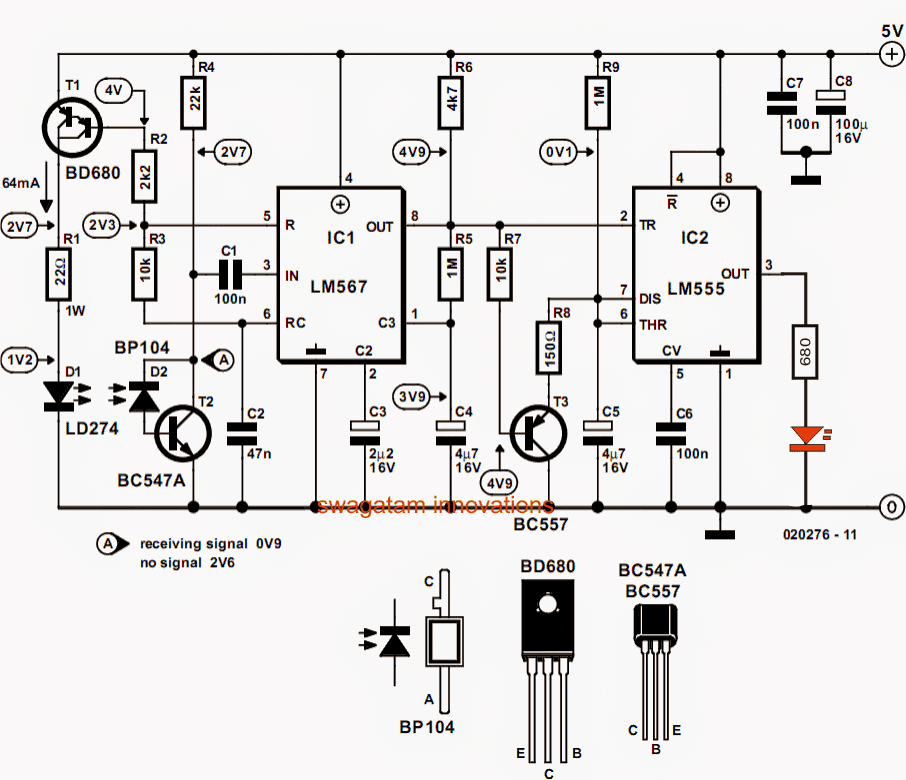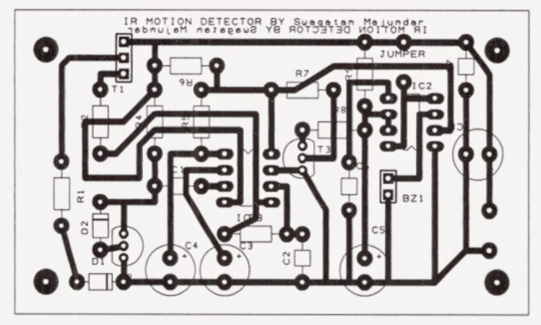In this post I have explained a simple infrared based proximity sensor circuit which is implemented to study birds and their behavior, by installing the circuit beside artificially made bird nests. The idea was requested by Mr. Jan Simberg.
Technical Specifications
I hope you have time to read these few lines. First of all thanx for interesting schemas! They are working, too! We are three guys who are studing birds and we have abt 1700 bird nests to check. The bird nest is a small wooden box with a hole in the front.
I'm NOT an electrician but I'm trying to find an inexpencive way to lit a LED outside the nest (only some tens!) when a bird is in. The LED has to flash abt 5 min after every detection of movement.
I can use an rechargeable battery and a solar cell from a garden light - this is OK. I found your "Accurate Infrared Motion Detector or Proximity Detector Circuit" in the Internet and that could be a solution. Can I change the buzzer to a LED with a resistor?
Secondly I found your "Low battery indicator circuit using two transistors only" and that a was a hit. What is the lowest voltage for a rechargeable battery pack 4 times 1,2V = 4,8V? Any ideas how to drop the current consumption? What abt the 5min latch on?
Eddy current and PIR detectors could work but I think they consume current too much. Ultrasound detectors are out of the question - what frequency does a bird hear?
At last, I made a quick PCB layout for your IR detector. Pls delete if too horrible.
Regs,
Jan Simberg
The Design
The proposed bird in the nest detector circuit may be understood with the following points:
The IC LM567 is configured in its standard phase locked loop frequency detector mode.
The IR photo diode LD274 is fed with the set frequency from the IC and this photodiode becomes the transmitter device.
Another photodiode BP104 is positioned parallel to the above photodiode such that it can receive the reflected IR rays in the presence of an obstacle (a bird here) within the specified distance in front of them.
The BP104 becomes the receiver IR device of the circuit, and is tuned to respond only to the reflected rays from LD274 and not to any other spurious invasions.
As soon as an obstacle is detected, the BP104 triggers and activates the IC LM567 with a low logic at its output pin8.
However the above triggered low logic will be active only for so long as the intruder is preset in the detection zone.
In order to keep the output sustained for a reasonable period of time, an IC 555 monostable is introduced in conjunction with the IC LM567.
The IC 555 accepts the low signal from pin8 of LM567 and keeps its pin3 high for some predetermined length of time even after the LM567 output is deactivated due to a possible abrupt disappearance of the obstacle.
The period for which pin3 of IC 555 remains ON may be set by suitably adjusting the values of R9/C5
The transistor T3 restricts and inhibits C5 from charging until pin8 of LM567 is deactivated due to removal of the obstacle.
The above step ensures that the IC 555 output latch ON timing initiates only after the bird has entered the nest, this also ensures that the IC 555 output executes the predetermined time latch only after the pin8 of the IC LM567 has become inactive.
Circuit Diagram


The PCB design for the above circuit, sent by Jan:

Great Site! Could a similar circuit be created using a 4046 chip instead of the 567? More generally, when would one use the 4046 vs. the 567?
thanks, yes 4046 can also be used but 567 is more compact, easily available and less complicated to configure.
Please sir, i need a simple transistorised touch sensitive circuit that when touched once it will activate a relay and stay that way until you touch it again before it will deactivate the relay. And again, which of this can perform such function: (Monostable, Bi-stable or Astable multivibrator) ?
jideofor, try googling "transistor bistable circuit" you will get plenty of them online.